Hamachi Sushi
A Comprehensive Overview of Japanese Amberjack (medium-sized) in Japanese Sushi Cuisine
ハマチすし 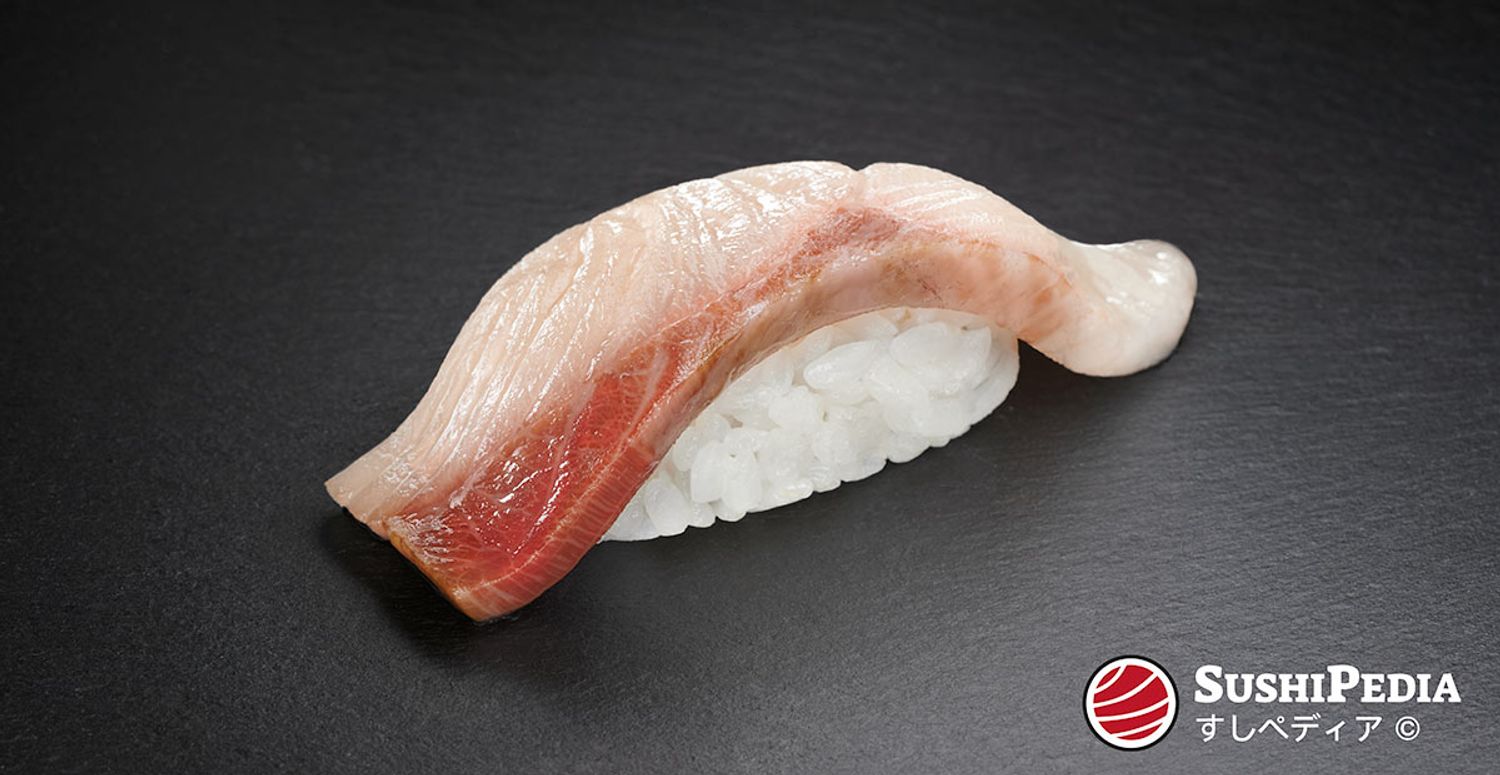
What is Hamachi?
Hamachi ハマチ, scientifically known as Seriola quinqueradiata, is the Japanese name for a medium-sized japanese amberjack or yellowtail (buri). It is a species of jack fishes in the family of Jacks and pompanos. An individual known as a hamachi measures between 40 and 60 centimeters (ca. 16–24 inch). This size is about half to three quarters of that of an adult buri. Today, hamachi is widely used for sushi and sashimi preparations due to its buttery texture and subtle sweetness.
Hamachi for Sushi or Sashimi
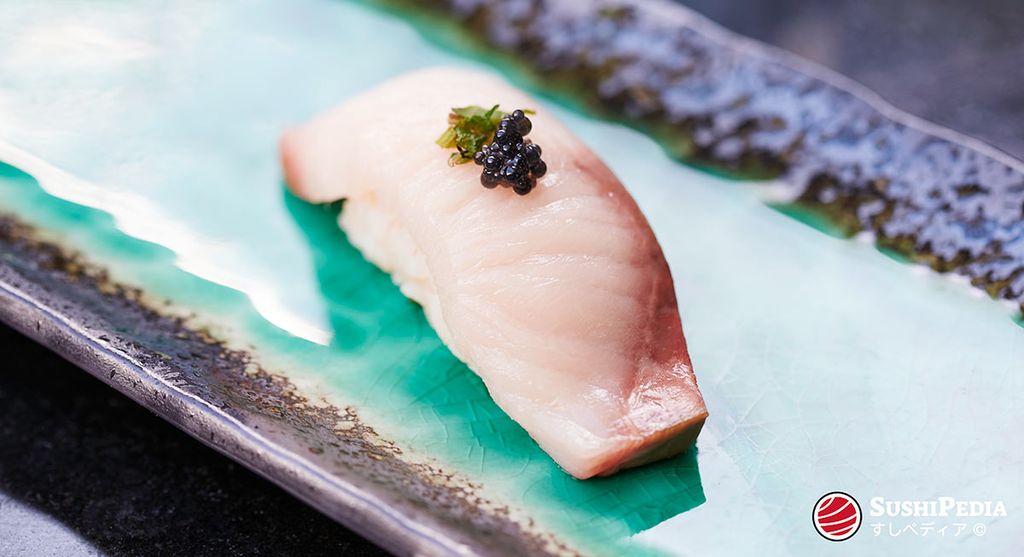
SushiPedia. Hamachi Nigiri Sushi. All rights reserved ©
The taste is full-bodied, minerally and slightly buttery with a distinct sweetness. The light-colored and whitish to pinkish red meat has a pleasant soft texture, is medium firm and thanks to the fat content remarkably tender. The meat of hamachi is equally suitable for nigiri sushi or sashimi.
Hamachi from aquaculture differs significantly from wild caught specimens. The taste of a farmed specimen is lighter and less intense. In addition, the taste depends on the composition of the feed or diet. In farmed fish, especially those with high fat content like hamachi, it is typical that the composition of the feed influences the taste. Depending on the farm, different feeds are used. These range from inexpensive pelleted feeds based on plants (soybean meal or rapeseed oil) to additives that imitate the natural taste (e.g., sardines, anchovies).
Best Season
The best season for hamachi is from autumn to winter, with the peak in December until late February. The young fish form a shoal and migrate from the north towards Hokkaido, along the Sea of Japan, to the south. The hamachi caught in the winter also carries the name kan hamachi (寒ハマチ). In the winter, caught kan hamachi are particularly fat and therefore tastier.
Hamachi from aquaculture is available in consistent quality all year round.
Hamachi as Synonym for Farmed Buri
Traditionally, young and medium-sized hamachi are called buri. In fact, however, the term hamachi is now synonymous with buri from aquaculture breeding (養殖). Wide distribution of commercially farmed hamachi began in the early 1960s and has continued on a large scale ever since. The majority of animals that reach the market after two years of mast are called hamachi.
Hamachi in Japan
Why a Young Buri Is Called Hamachi
The Japanese amberjack is commonly referred to as shusseuo (出世魚) fish in Japan. This general term describes fish whose name changes during their growth. The custom originated in the Edo period, when samurai and scholars celebrated their entry into adulthood or social advancement by changing their names. Because of this custom, the name of a fish whose taste changes for the better during its growth has become known as shusseo, and it is said to be used as a good luck charm and as a gift.[1]
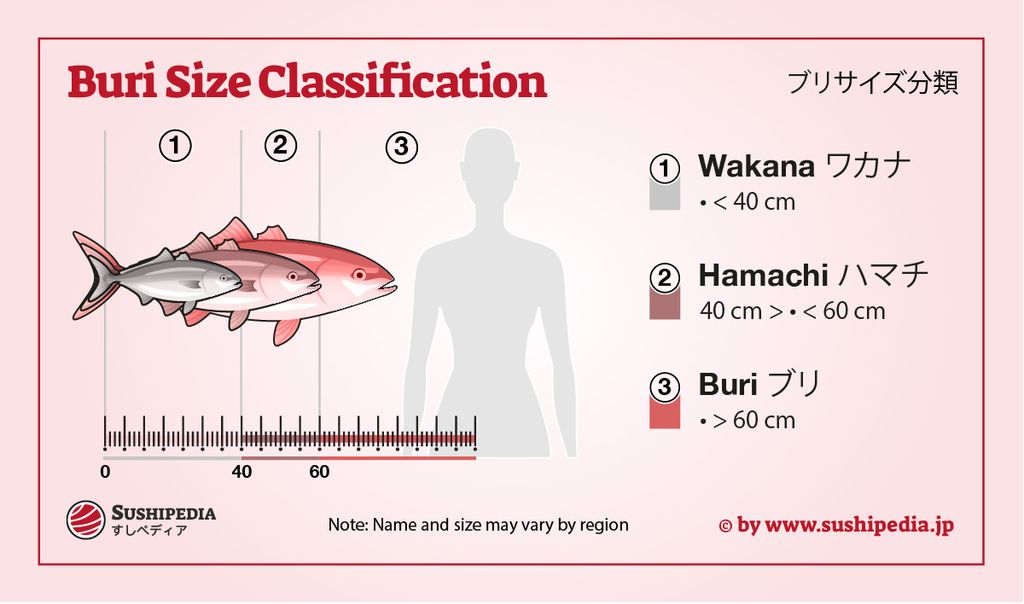
SushiPedia. Buri Size Classification Chart. All rights reserved ©
Japanese yellowtail that are classified as hamachi are on average 40 to 60 cm long and have an age of one to three years.
Characteristics & Ecology of Hamachi
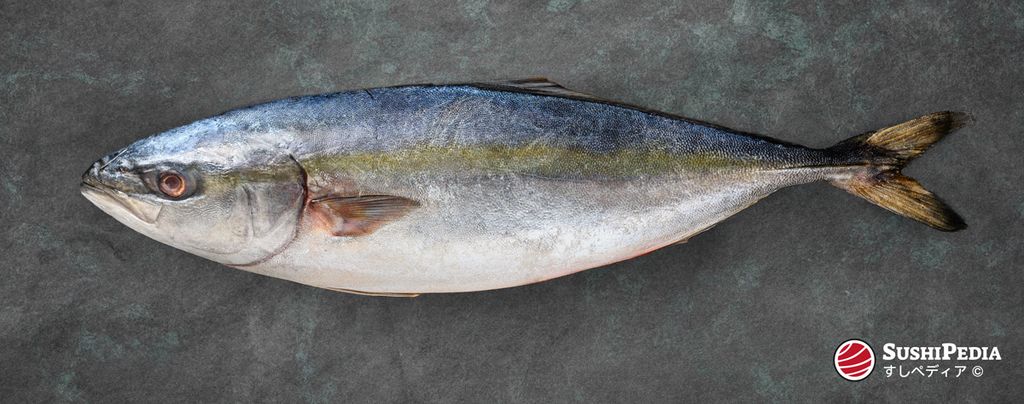
SushiPedia. Fresh whole raw Japanese yellowtail with tomato and herbs. All rights reserved ©
The distribution range of the Japanese amberjack opens up from the south over the East China Sea, in the north over the Kamchatka peninsula and in the east over the northwestern Pacific Ocean to Hawaii. Large populations are found in the Japanese sea as far as to Kyushu. In the late autumn, they move in swarms southwards to spend the winter there.
The Japanese amberjack is a fast swimmer, that as hunt-predacious fish predominantly pursues small fishs, crustaceans and cephalopods during the day. The maximum size is about 1,5 m with a weight of 40 kg, on average most animals have a length of 1 m and a weight of about 8 kg.
Economy of Hamachi
Especially in “ordinary” sushi restaurants, farmed buri is generally named hamachi. Mostly this applies to farmed specimen with a size between 4 and 6 kg. The main breeding centers are located in the prefectures of Kagoshima, Ehime and Nagasaki. The market demand is almost completely covered by marine aquaculture. According to the Food and Agriculture Organization of the United Nations (FAO), Japan is the only significant producer of farmed buri or hamachi in the world.
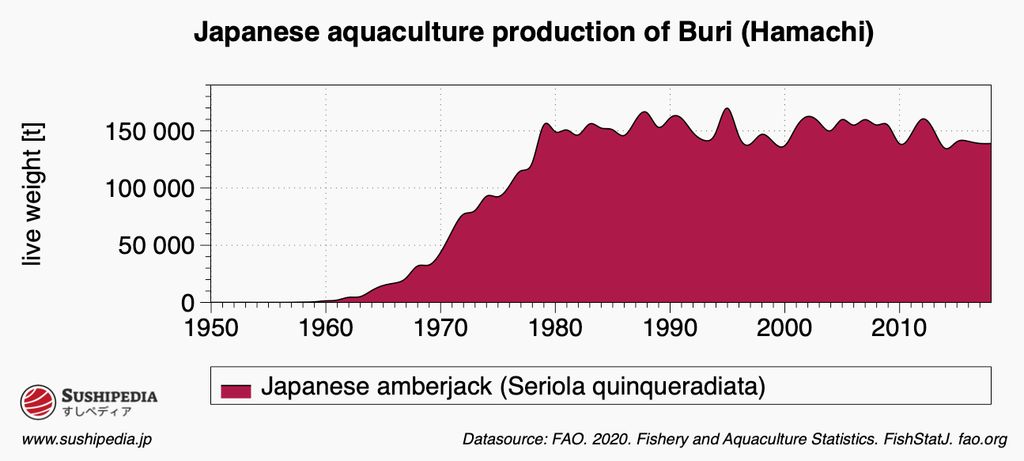
SushiPedia. Trends in Japanese Aquaculture Production of Buri (Hamachi). All rights reserved ©
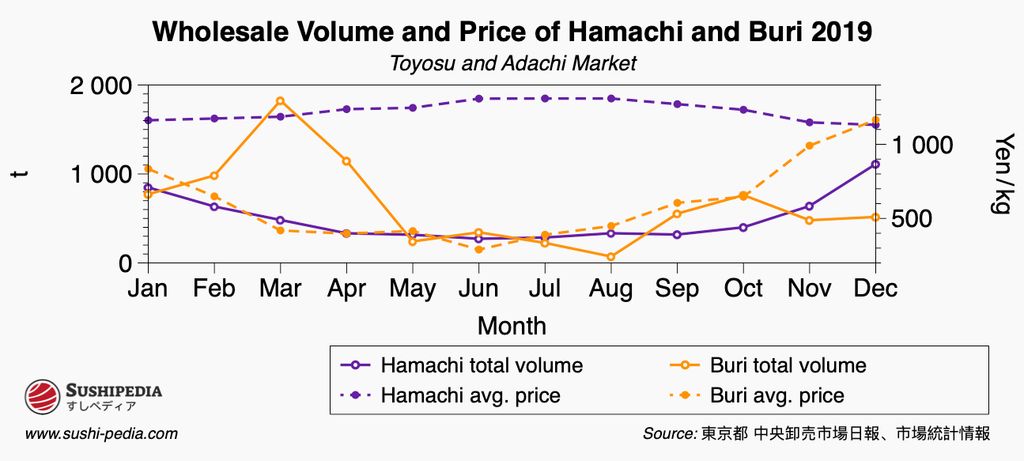
SushiPedia. Wholesale Volume and Price Correlation of Hamachi and Buri in 2019 at Toyosu and Adachi Markets. All rights reserved ©
Season Calendar for Hamachi
The calendar shown does not provide information on fishing times, but marks the periods in which hamachi is considered particularly tasty.
Warnings related to Hamachi
Video about Hamachi
External video embedded from: youTube.com. Credit Hiroyuki Terada - Diaries of a Master Sushi Chef. How To Fillet a Whole Hamachi - How To Make Sushi Series.
Species of Hamachi
The following species are regarded as authentic hamachi. Either historically, according to the area of distribution or according to the common practice in today's gastronomy:
Sources and Further Reading
- [1]進藤つばら. 『出世魚とは?種類や順番、名前が変わる理由など、意外な豆知識を徹底解説!』. Shogakukan Inc., Warakuweb, 2020-02-28. Source retrieved 11/25/2020
- [2]Fish and Fishery Products Hazards and Controls Guidance. U.S. Department of Health and Human Services Food and Drug Administration Center for Food Safety and Applied Nutrition. 2020
- Fisheries and Aquaculture Department. Fishery and Aquaculture Statistics. Global production by production source 1950-2018 (FishstatJ). Food and Agriculture Organization of the United Nations (FAO), Rome. 2020. Source retrieved 12/24/2020
- Seafood Watch, Consulting Researcher. Yellowtail, Seriola spp., Japan, Marine Net Pens, Aquaculture Standard Version A2. Monterey Bay Aquarium, Monterey. 2016. Source retrieved 12/24/2020
- Shusaku Takagi, Hisashi Murata, Takanobu Goto, Hideo Hatate, Hirofumi Yamashita, Akira Takano, Masaharu Ukawa. Long-term Feeding of the Yellowtail Seriola quinqueradiata with Soy Protein Concentrate-based Non-fishmeal Diet. Aquaculture Science 61 (4). 2013
- IUCN Red List of Threatened Species. Version 2023-1
Image Credits
- SushiPedia. Hamachi Nigiri Sushi. All rights reserved ©
- SushiPedia. Buri Size Classification Chart. All rights reserved ©
- SushiPedia. Trends in Japanese Aquaculture Production of Buri (Hamachi). All rights reserved ©
- SushiPedia. Fresh whole raw Japanese yellowtail with tomato and herbs. All rights reserved ©
- SushiPedia. Buri Sushi. All rights reserved ©
- SushiPedia. Wholesale Volume and Price Correlation of Hamachi and Buri in 2019 at Toyosu and Adachi Markets. All rights reserved ©
- SushiPedia. Buri Size Classification Chart. All rights reserved ©